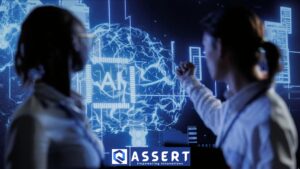In 2025, everyone in the software industry is talking about one big question — can AI replace manual testers? Many tools use AI to make testing faster, smarter, and more accurate. But does this mean manual testers will lose their jobs? The real truth might surprise you.
AI in Testing – What It Can Do
AI can help testers in many ways. It can:
-
Find bugs automatically using machine learning.
-
Suggest test cases based on user behavior.
-
Heal broken locators in automation (self-healing tests).
-
Analyze large test results quickly.
-
Create smart test data using AI models.
These tools save time and help reduce human errors. For example, Applitools uses AI for visual testing, and Testim.io uses machine learning for faster automation.
What Manual Testers Still Do Better
Even though AI is powerful, it still cannot fully replace human thinking. Manual testers bring creativity, intuition, and critical thinking that machines don’t have. Here’s what humans still do better:
-
Understanding user needs and emotions.
-
Testing complex business flows.
-
Finding usability and UI issues.
-
Thinking outside the box.
AI follows patterns. But human testers can think beyond patterns and test how real users behave.
The Future: AI + Human Collaboration
The future of testing is not about choosing between AI and humans — it’s about working together.
AI can handle repetitive work like regression testing, while manual testers focus on:
-
Exploratory testing
-
Risk analysis
-
UX testing
-
Writing better test strategies
This mix makes testing faster and smarter.
How Testers Can Stay Ahead
To grow in this AI-driven world, manual testers should:
-
Learn basic automation tools like Playwright or Selenium.
-
Understand how AI testing tools work.
-
Use AI for smarter decisions (for example, predicting high-risk areas).
-
Keep learning new QA trends and tools.
By upgrading skills, testers can stay valuable and future-ready.
Conclusion
So, can AI replace manual testers? The answer is no — not completely.
AI will automate repetitive tasks, but human intelligence, logic, and creativity are still needed to make quality software. The best future is one where AI supports human testers, not replaces them.




